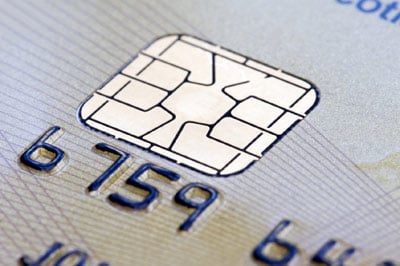The Role of EMV in Our Payments Future

By. Tom Gandre, PCSU
EMV (Europay, MasterCard, VISA), the world’s standard for inter-operation of “smart cards” or “chip cards,” occupies a powerful position in the future state of the payments ecosystem. The technology represents a prime opportunity for credit unions to deliver at least three key benefits to their members over the next several years: better fraud prevention; the ability to grow through more convenience and appeal for international travelers – not to mention an accelerated pace of payments innovation.
Fraud Prevention Trumps Detection
The adoption of EMV in other parts of the world has significantly reduced card fraud in those regions. Although the U.S. is no stranger to fraud, payment card fraud is now logically following a path of least resistance to even more aggressively ply its trade in America. The migration of fraud from EMV-enabled countries to the United States is already underway. Between 2009 and 2011, the percentage of the world’s payment system compromises centered on the U.S. rocketed from 38% to 67% (Visa Security Summit, Jakarta, May 2011).
Currently, credit union card issuers absorb $430 million in fraud losses. Based on other countries’ EMV experiences, PSCU estimates EMV deployment will cut fraud losses by 40% to 60%. Over a five year period, those savings could total $620 million that credit unions could return to their members in the form of lower loan rates or higher dividends.
Appeal to International Workers and Travelers
The number of merchant locations overseas where consumers can use mag stripe cards is diminishing, which is a source of frustration, particularly at unattended EMV terminals, for many travelers who carry mag stripe cards. EMV cards appeal to high value members who travel internationally; and military personnel and students overseas. As U.S. merchants and issuers convert to the EMV standard in the coming years, EMV will empower credit unions to attract and engage more members.
Ignite Payments Innovation
It is no big stretch to picture today’s EMV cardholder as a credit union’s next mobile payments channel adopter. EMV and NFC are two near-term game changing technologies that put a tremendous amount of transactional power in the hands of consumers and merchants. EMV’s chip technology is a foundational building block for future mobile payments methods – EMV forms the game changing payments DNA that will unlock a multitude of new transaction experiences for consumers.
Next Steps
While transitioning to EMV-enabled cards will cost U.S. financial institutions between $1.3 billion and $3 billion as they issue EMV cards and upgrade their ATMs (Javelin Strategy and Research, 2012), PSCU estimates the cost to credit unions of issuing EMV cards to all members will be $200-250 million. The fraud barrier alone should pay for that investment in only 24 months.
In order to successfully execute on EMV, credit unions must craft payments strategies that are cost appropriate for the institution, its members and its merchant community. In other words, EMV cards are not just about mailing out a chip card with a new expiration date, but rather EMV involves the entire payments ecosystem of the credit union.
The large scale implications of EMV card issuance make it a natural hub from which a credit union may evaluate multiple strategic approaches to payments. The timeline set by MasterCard and Visa creates an urgent deadline for credit union compliance. However, it also creates a natural inflection point to seize this opportunity to build a strategic bridge to payments innovation.

